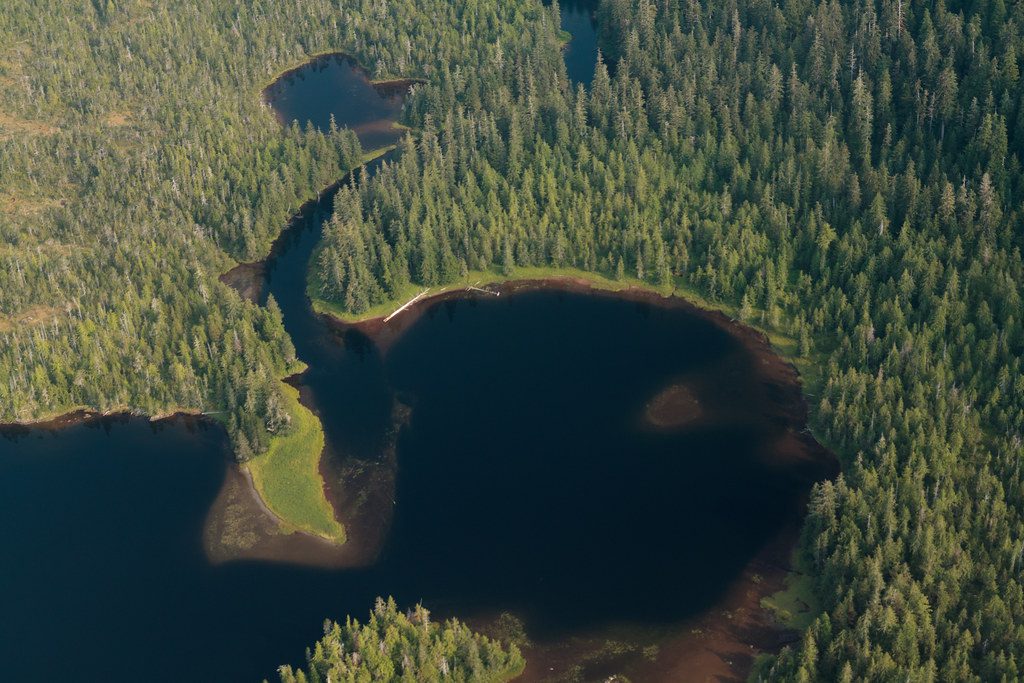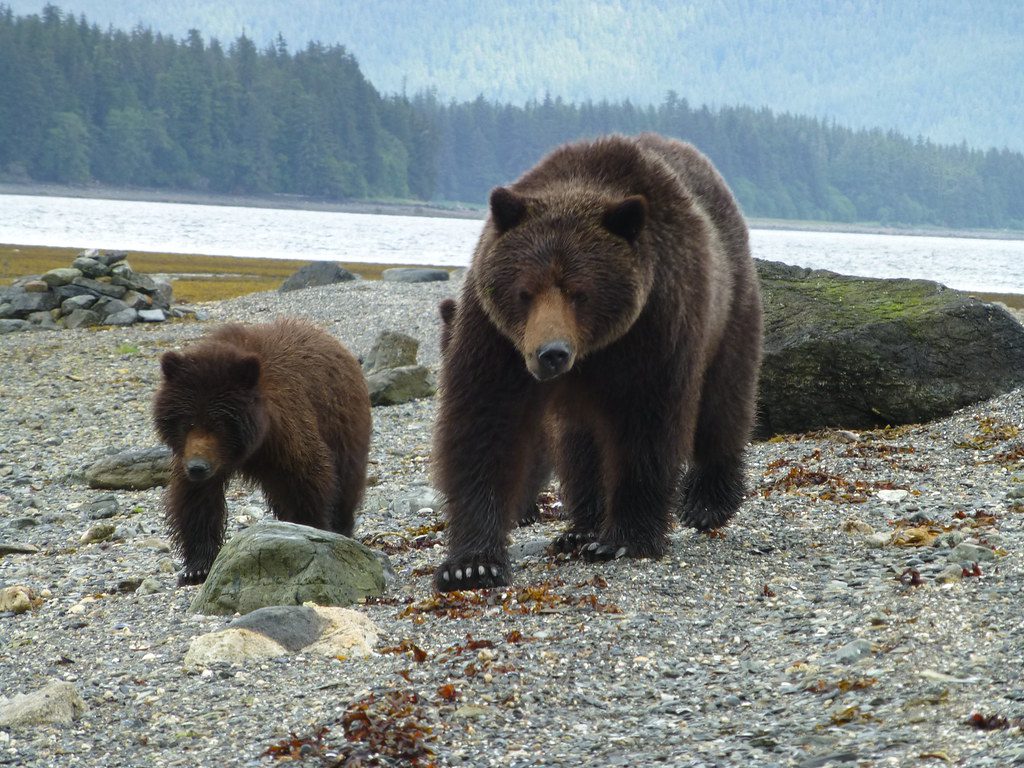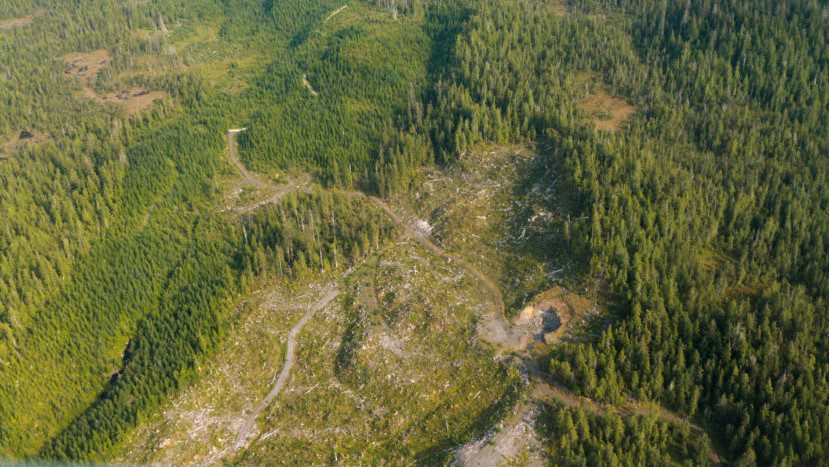The Tongass National Forest in Southeast Alaska is the largest U.S. National Forest at 16.7 million acres (6,800,000 ha; 68,000 km2). Most of its area is temperate rain forest and is remote enough to be home to many species of endangered and rare flora and fauna.
The Tongass, which is managed by the United States Forest Service, encompasses islands of the Alexander Archipelago, fjords and glaciers, and peaks of the Coast Mountains. An international border with Canada (British Columbia) runs along the crest of the Boundary Ranges of the Coast Mountains. The forest is administered from Forest Service offices in Ketchikan.

The many Tongass glaciers that can be seen today are remnants of the last ice age during the Pleistocene Epoch. The Tongass is also home to five species of salmon: king, red, silver, chum and pink.
The Tongass is also home to humpback and orca whales, otters, beavers, Alexander Archipelago wolves and some of the largest, densest concentrations of brown bears and bald eagles found on the planet.

The Tongass alone stores more than 1.5 billion metric tons of CO2-eq and sequesters an additional 10 million metric tons each year. It stores 8% of the total carbon in the forests of the United States.
According to alaskawild.org; en.wikipedia.org. Source of photo: internet




![[HONORARY PROFESSOR OF RECORD FOR PRACTICE AND EMPIRICAL RESULTS – 2024] RECORD HOLDER CHU BAO QUE (BAC GIANG PROVINCE, VIETNAM)](https://uskings.us/wp-content/uploads/2024/05/IMG_0386-218x150.jpg)



